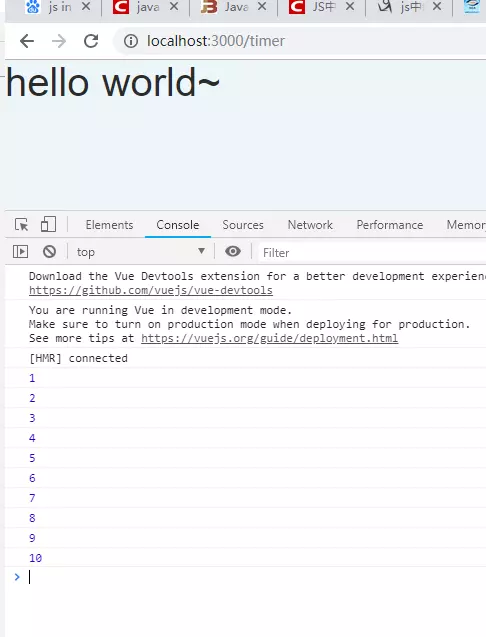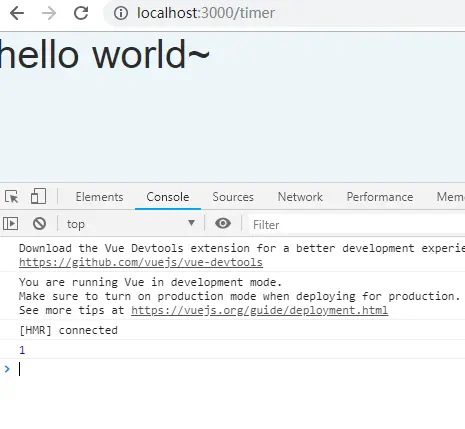js 中定时器有两种,一个是循环执行 setInterval,另一个是定时执行 setTimeout
# 一、循环执行( setInterval )
顾名思义,循环执行就是设置一个时间间隔,每过一段时间都会执行一次这个方法,直到这个定时器被销毁掉
用法是
setInterval
(“方法名或方法”,“延时”), 第一个参数为方法名或者方法,注意为方法名的时候不要加括号,第二个参数为时间间隔
<template style="margin: 0px; padding: 0px; white-space: pre-wrap; overflow-wrap: break-word; font-family: "Courier New" !important; font-size: 12px !important;">
|
|
<section>
|
|
<h1>hello world~</h1> |
|
</section>
|
|
</template>
|
|
<script> |
|
export default { |
|
data() { return { |
|
timer: '', |
|
value: 0 }; |
|
}, |
|
methods: { |
|
get() { |
|
this.value ++; |
|
console.log(this.value); |
|
}
|
|
}, |
|
mounted() { |
|
this.timer = setInterval(this.get, 1000); |
|
}, |
|
beforeDestroy() { |
|
clearInterval(this.timer); |
|
}
|
|
}; |
|
</script>
|

上面的例子就是页面初始化的时候创建了一个定时器
setInterval
,时间间隔为 1 秒,每一秒都会调用一次函数 get,从而使 value 的值加一。
# 二、定时执行 ( setTimeout )
定时执行 setTimeout 是设置一个时间,等待时间到达的时候只执行一次,但是执行完以后定时器还在,只是没有运行
用法是 setTimeout (“方法名或方法”, “延时”); 第一个参数为方法名或者方法,注意为方法名的时候不要加括号,第二个参数为时间间隔
<template style="margin: 0px; padding: 0px; white-space: pre-wrap; overflow-wrap: break-word; font-family: "Courier New" !important; font-size: 12px !important;">
|
|
<section>
|
|
<h1>hello world~</h1> |
|
</section>
|
|
</template>
|
|
<script> |
|
export default { |
|
data() { return { |
|
timer: '', |
|
value: 0 }; |
|
}, |
|
methods: { |
|
get() { |
|
this.value ++; |
|
console.log(this.value); |
|
}
|
|
}, |
|
mounted() { |
|
this.timer = setTimeout(this.get, 1000); |
|
}, |
|
beforeDestroy() { |
|
clearTimeout(this.timer); |
|
}
|
|
}; |
|
</script>
|

上面是页面初始化时候创建一个定时器 setTimeout,只在 1 秒后执行一次方法。